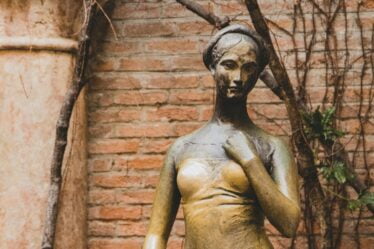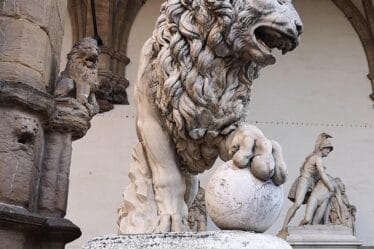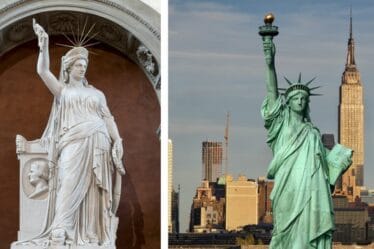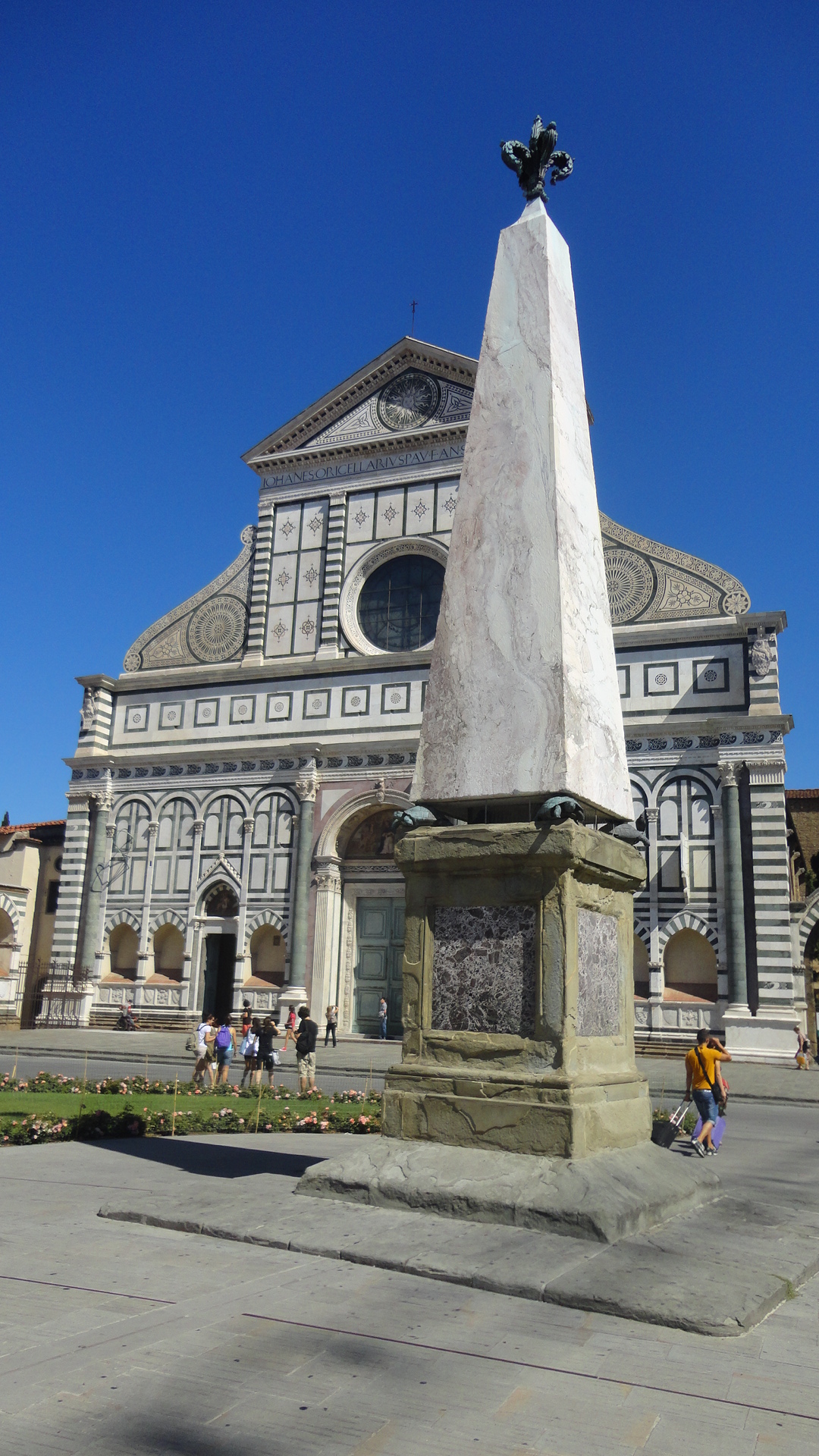
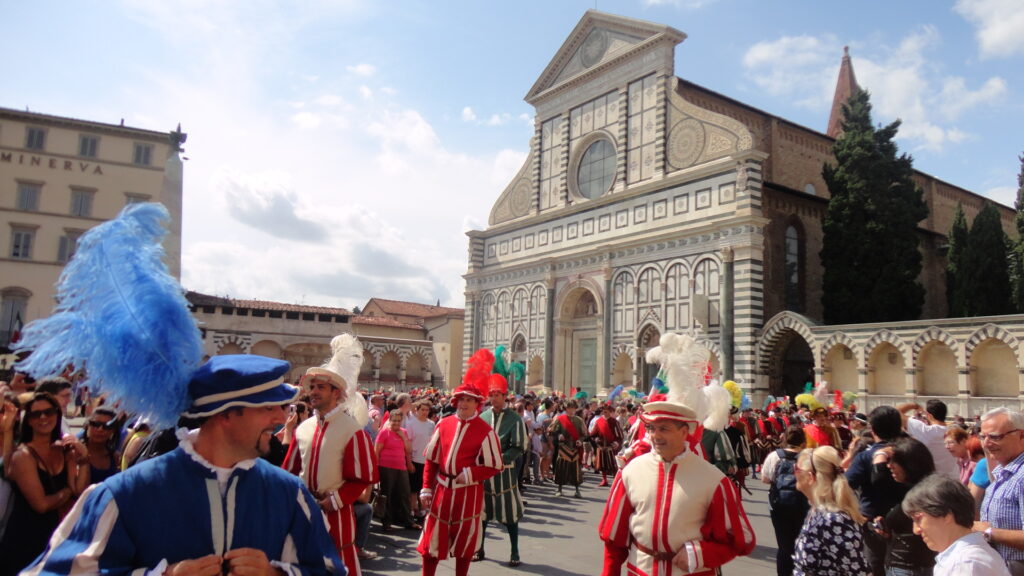
Since the Middle Ages, the square has been the site of festivals, rides, and other races. In 1563, Grand Duke Cosimo I de’Medici designated it as the headquarters of the Palio dei Cocchi, which took place on June 23, the eve of the feast of San Giovanni Battista, Florence’s patron. This wagon race, which continued until the mid-nineteenth century, took place on the square between the Basilica and the Hospital of San Paolo. The Giambologna erected the Serravezza marble obelisks, which designated the two extremities beginning in 1608. Obelisks perch on four bronze turtles and end with the Florentine republic’s emblem, the lily. The two obelisks set in place by Bartolomeo Ammannati still refer to this race in 1608, which mark the two extremities of the square and amid which a canapo was drawn, defining the principal axis of the elliptical path that had to follow the Cocchi.
The Palio de ‘Cocchi gets its name from the chariot used in the race, which is strikingly similar to the Roman vintage chariot used for the Circus racing Massimo. In fact, the Palio de ‘Cocchi was organized by the Grand Duke Cosimo I de’ Medici in 1563, specifically to imitate the races that the ancients played with Circus Maximus.
A true Florentine re-edition of the ancient Roman races, because the cocci had the shape of the Roman wagons, four wooden cottings pulled by two horses, distinct from the four colors, and the Aurighi were driven straight, standing, dressed in the colors of the Florentine teams: Prasina (green), Russata (red), Venetian (blue), and white.
It was not by chance that the doctors chose the square of Santa Maria Novella for this re-enactment: in fact, the philologist and historian Vincenzo Borghini, lieutenant of the Grand Duke Cosimo, already in 1569 after clarifying between amphitheater and circus identified the latter: “where today it is The cross in Trebbio, not only for the round shape, which, like the amphitheater, represented the houses pulled above the old foundations, but still for some vestiges found underlying several occasions that are recognized for their own of this sort of factories “.
The sound of the trumpet signified the Grand Duke’s “move” (i.e., departure), and the race finished after three loops at the starting obelisk. The Grand Ducal family attended the Palio under a big canopy particularly built up on the stairway of the San Paolo loggia. The winner received a Cremisi velvet pole, which was created at the expense of the Guelph commanders. The last cocci race in Piazza Santa Maria Novella occurred in 1852. He tried to relaunch the Palio twice, in 1902 and 1935, but there was no follow-up.
If you want know more about this original stories of Florence come to visit this beautiful renaissance town with us. We are starting our Florence Free Tour in front of Minerva Hotel where we have our meeting point. Book your tour and sow up, with our official expert guide from Florence you will have an forgettable experience.

